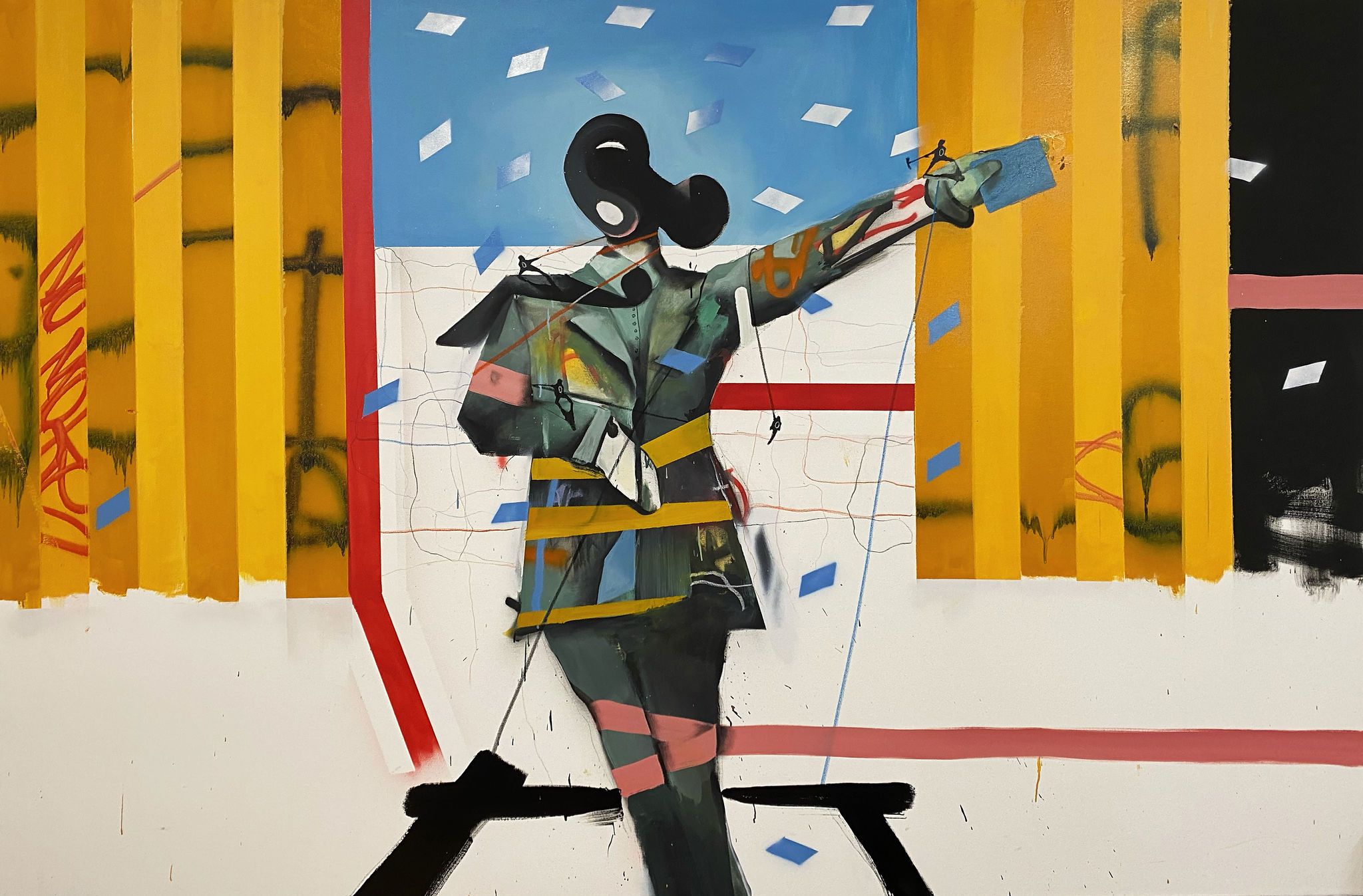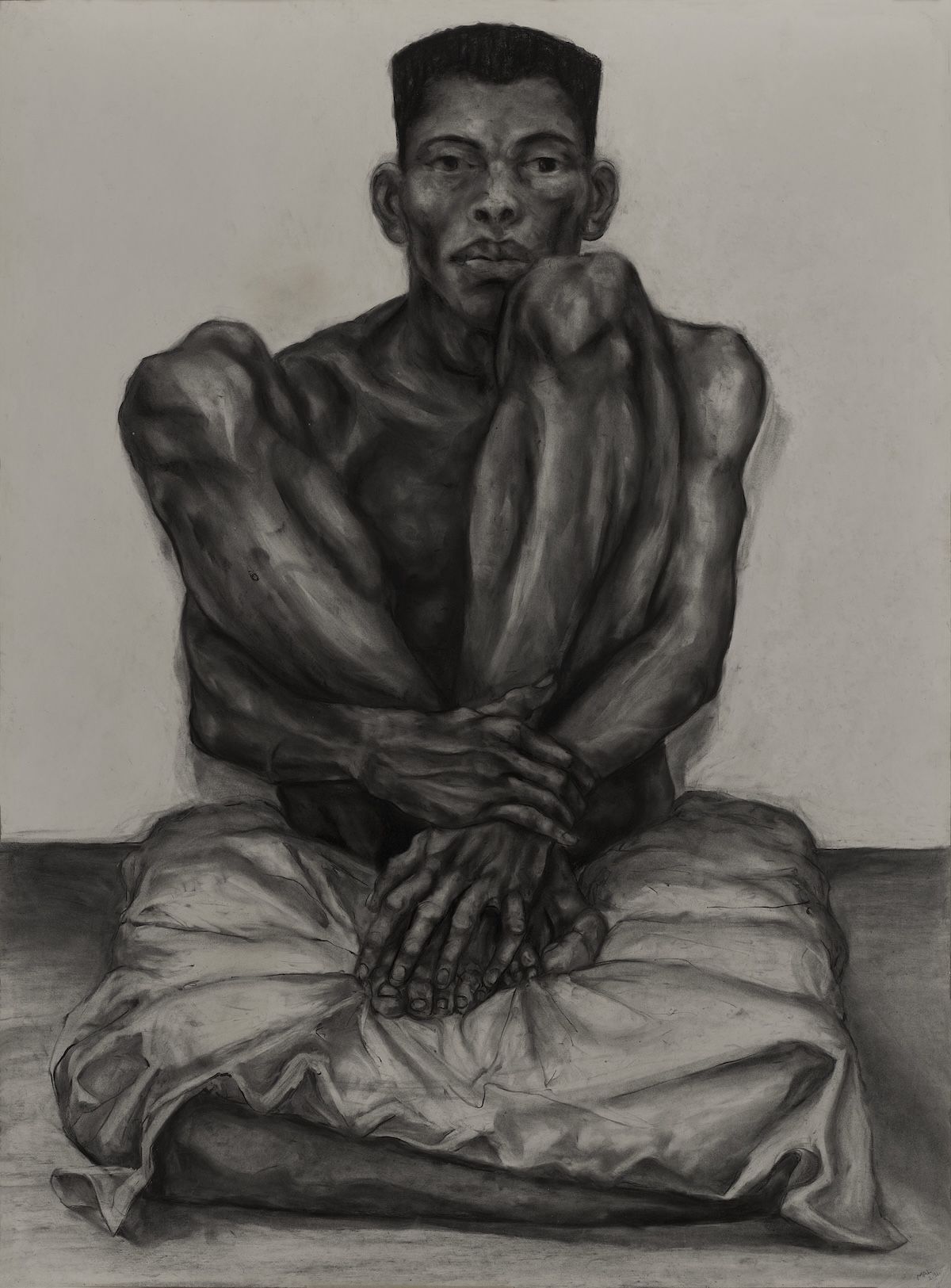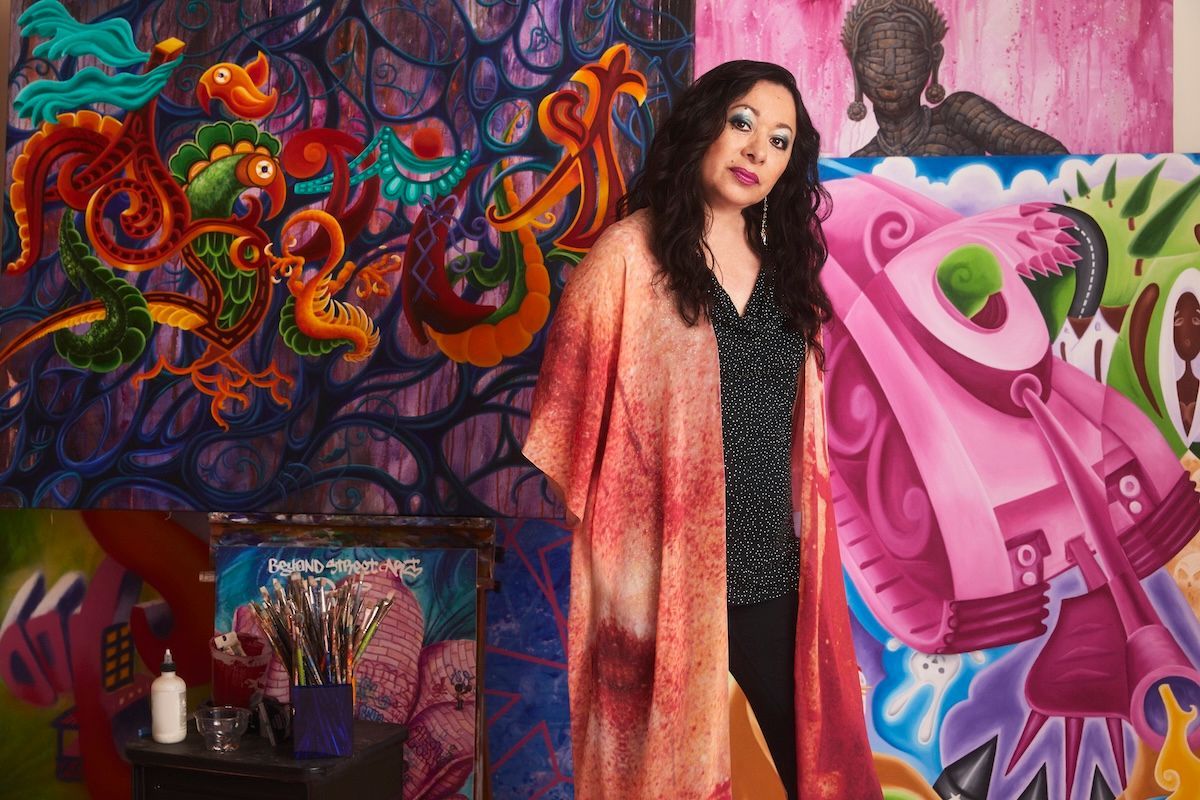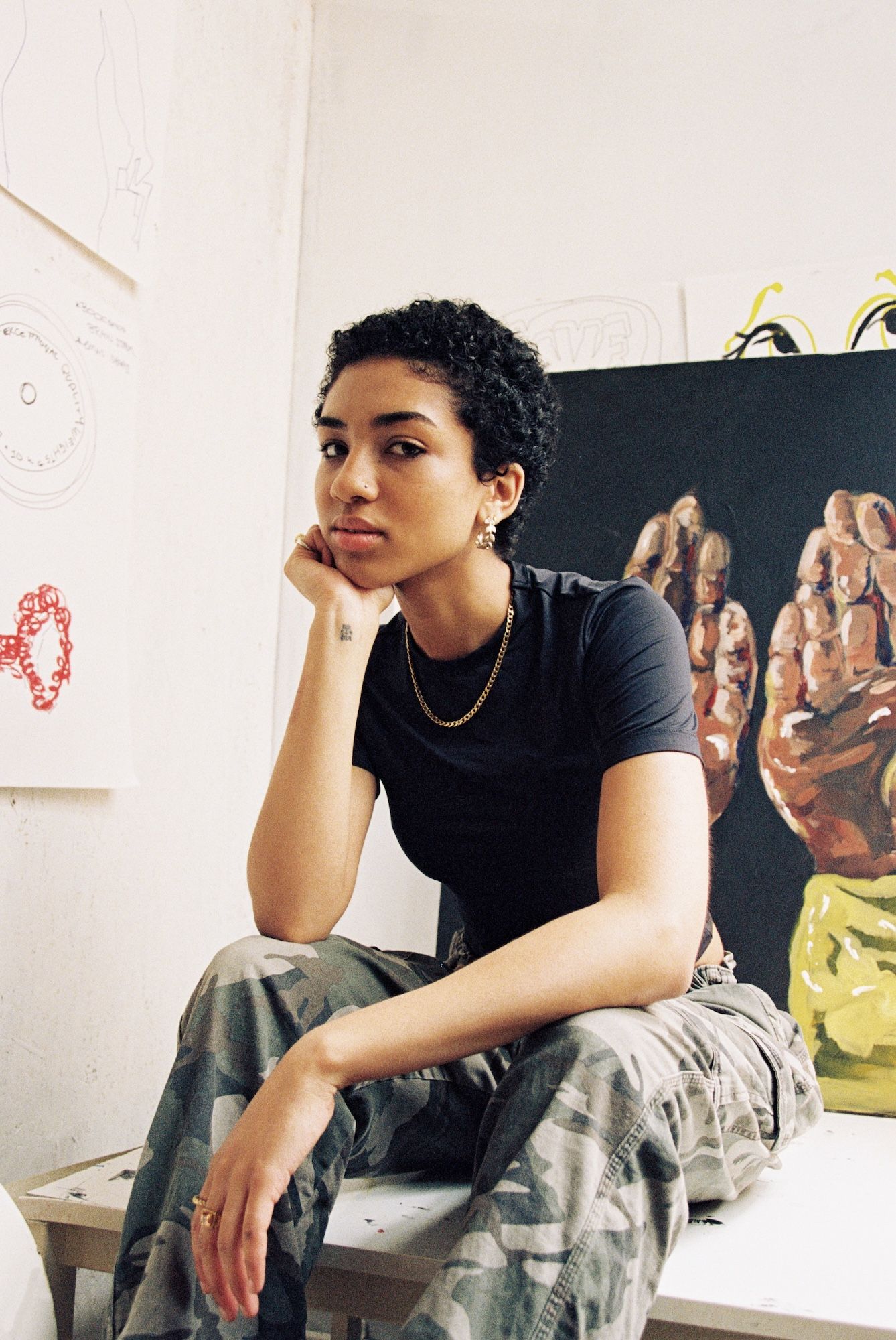A modern urban expressionist combining abstraction with surreal figuration, Marcus Jansen draws on his military past to comment on socio-political issues and offer a poignant insight into the realities of war. His latest exhibition, Victims and Victors is on display at Almine Rech, London, from 13 January 2022.
Being in combat is a life changing experience, one that can have long-lasting impacts on the body and mind of those who survive the battlefield.
Due to prolonged exposure to myriad of potentially traumatic events, service personnel who put their lives on the line in active theatres of operation are vulnerable to psychological distress and mental health problems including depression and post-traumatic stress disorder (PTSD). In a 2017 study that followed 5,826 United States veterans, a staggering 12.9% were diagnosed with PTSD – a rate twice as high as that of the general US population (6.8%).
While Cognitive-Behavioural Therapy (CBT) – a short-term therapy technique that works by identifying, tackling, and changing thinking patterns causing distress – is the preferred method of treatment for PTSD patients, art therapy has proved a key tool in the healing process of those suffering from trauma-induced stress.
Using art as a medium to address emotional issues and enhance individual expression, art therapy helps participants better understand and communicate traumatic experiences, cope with symptoms and improve cognitive abilities.
Among the veterans who have benefited from art therapy is contemporary American painter Marcus Jansen. Born in 1968 in New York and raised between the South Bronx, Laurelton and Monchengladbach, Germany, Jansen enlisted in the US Army at 21 and was deployed to the Gulf War in 1990.
Following nine months of service in Iraq and a year-long tour to Korea, he received a diagnosis of post-traumatic stress disorder. Once home, Jansen entered a rehabilitation programme – one that used art as a therapeutic outlet and a means of healing. The experience not only provided him with a safe environment and a language to explore and articulate feelings and emotions; it also rekindled a passion for painting – an interest that had lain dormant for a long time.
Today Marcus Jansen is unanimously regarded as a key figure of modern expressionism, internationally praised for his large-scale canvases crossing abstraction with surreal figuration, graffiti art with action painting.
Drawing on his military past to address themes of war, surveillance and propaganda, social injustice and economic inequality, Jansen’s work conveys a sense of raw, instinctive immediacy that reflects in the sheer vigour of the bold and richly gestural brushwork.
The urgency and contemporaneity of his vision pair with the ambiguity of the pictorial space, where the allegorical and the real coexist and merge to shape elaborate, enthralling narratives of memory and metaphor, of personal and collective trauma.
In his latest exhibition, Victims and Victors, at Almine Rech, London, Jansen looks at the repercussions (emotional and otherwise) of war on frontline troops, while spotlighting the biases of historical writing.
Stripped to the essentials, the characters in the portraits are archetypes with no countenance – symbolic figures, one might say, that embody the depersonalising experience of warfare. Victims and victors thus become indistinguishable, to confirm that the physical and mental harm inflicted by war is common and universal as it does not discriminate by race, gender or nationality.
Ahead of the opening of Victims and Victors, 1883 Arts Editor sat down for a chat with Marcus Jansen to discuss his work and the benefits of art therapy for those suffering from PTSD.
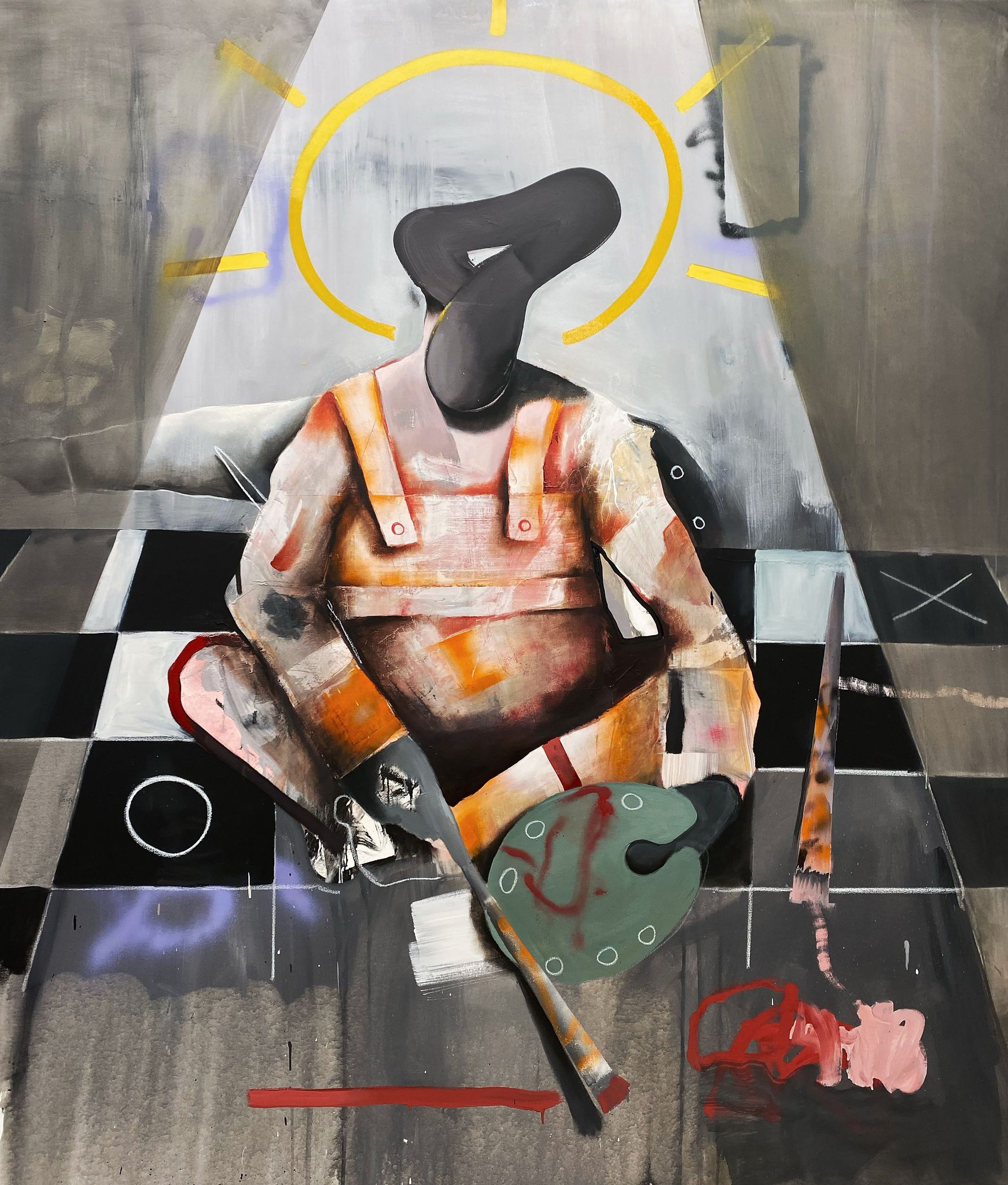 Marcus Jansen, Creative Genius, 2021
Marcus Jansen, Creative Genius, 2021
Thank you for finding time for 1883 Magazine.
Victims and Victors reflects on the horrors of war and the biases of history, which is often written from a white male perspective.
Having had a first hand experience of the realities of war – in 1990 you were deployed to the Gulf War – I wondered, how does your military past inspire and inform your work as an artist?
It was an overnight, transformative experience from boy to man. I was barely 20 years old when I deployed immediately following basic training. It gave me the humility to appreciate something as mundane as a warm bed and taught me what was most important in life. After seeing the war’s destruction, I instantly questioned the political and human motivations for why we do what we do.
As an artist, I channel those emotions but also have questions about both historical and contemporary conflicts. I visually document history while questioning it from a victim’s perspective.
Back from the war, you were diagnosed with PTSD. Art therapy played a key role in your recovery. What did you take away from your experience with art therapy?
It was enlightening because I realised I could use a visual language and vocabulary to express my thoughts and feelings. When I had my first exhibition at age 6 in Queens, New York, I saw that art could be used for much more than just decoration, but as a tool to communicate with others. The art therapy directors saw that I had talent and it got me thinking that this was something I could possibly do for a living.
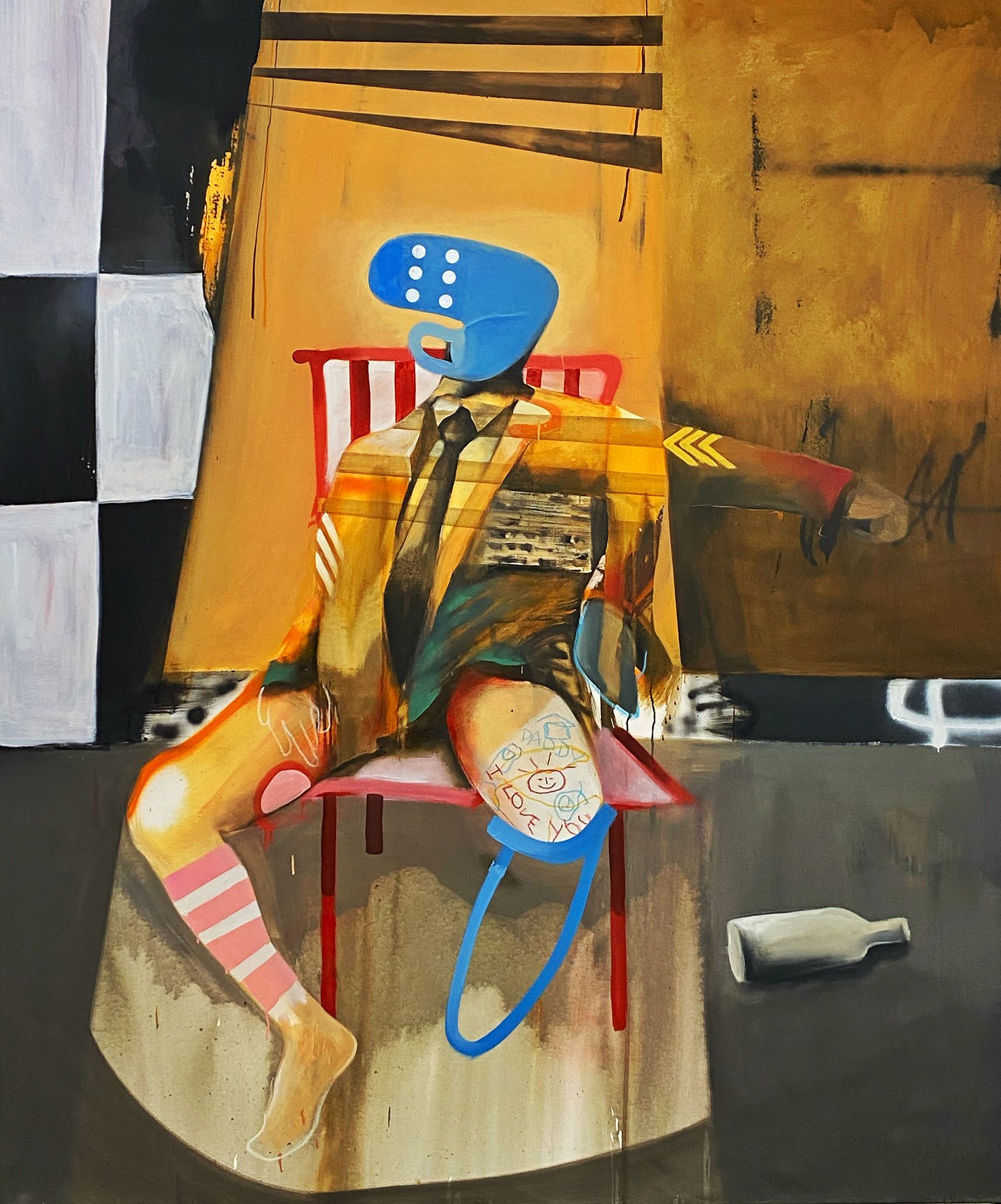 Marcus Jansen, Soldier with PTSD, 2021
Marcus Jansen, Soldier with PTSD, 2021
And what kind of difference in your view can art make for people working through trauma?
It can substitute for alcohol, drugs and any other addiction as a safe escape to a place where you control your own narrative and truth. I look at it as a second or in my case third language that others can spend time dissecting and learning.
Your work has been described as melding abstractionism, surrealism, expressionism and graffiti art. To what artists and art movements have you been most drawn for inspiration?
The first art movement I was aware of was graffiti art. Living in New York City in the 60’s and 70’s, writing on the walls was just part of the urban landscape. Although I had never really paid attention to it until the 80’s when it became more popular, graffiti instantly drew me in because of its rebellious spirit and freedom of expression in came from a place where I was from.
Some other movements later that inspired me much were the German expressionist painters who also rebelled in time of war, poverty and political unrest. I never consciously was drawn to surrealists, but abstract expressionism’s freedom and gestural qualities also resonated with me.
How did your interest in art develop? What made you take the leap to pursue a career as an artist?
I’m not exactly sure how, but I believe it was really out of a sense of need, whether it was because I was the only child of colour living in a town in Germany or simply trying to find a language that transcends cultural barriers, race or any other manmade, artificial boundaries that can communicate on a broader level of different frequencies. I felt it was a necessity, which is also why I never saw art as a profession, but rather as communicating.
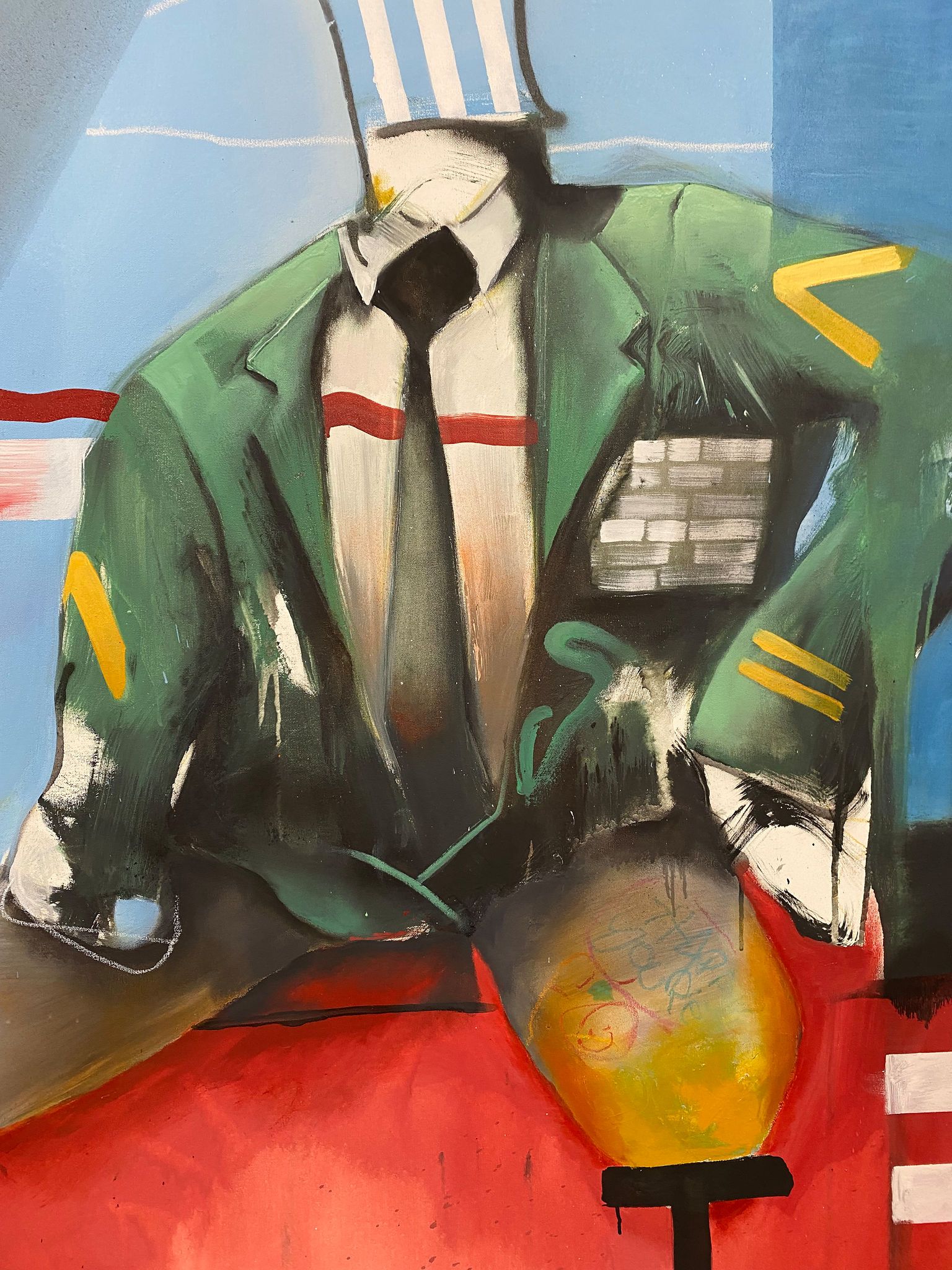 Marcus Jansen, A Confident Wounded Warrior, 2021
Marcus Jansen, A Confident Wounded Warrior, 2021
About your creative process: how do you approach the blank canvas?
I typically start with an underlying influence that moves me. This can range from something that’s unjust or politically charged or any other human concern, because that is the underlying intent in all my paintings. You can find me in my work either directly or indirectly.
I use mostly traditional European or American expressive contemporary painting techniques which often make the works appear as if they were painted 50 or 100 years ago.
But the narrative and imagery is updated with a critical and even sarcastic point of view that contrasts historical references with today’s. I often use bold, happy colours that catch people’s attention, but then quickly juxtapose them with more serious subject matter.
What would you like visitors to take away from the Victims and Victors exhibition?
Each viewer will take away what their own psyche, education, exposure, experience, etc., allows them. But to me, the most important part is that viewers are able to contemplate the realities around us and more importantly, see the victim’s rather than a victor’s perspective. That is what will decide the way forward for humanity. The more we are exposed to, the more we will “see”.
Finally, what does the future hold for you?
I would like to enjoy continued health, peace and happiness.
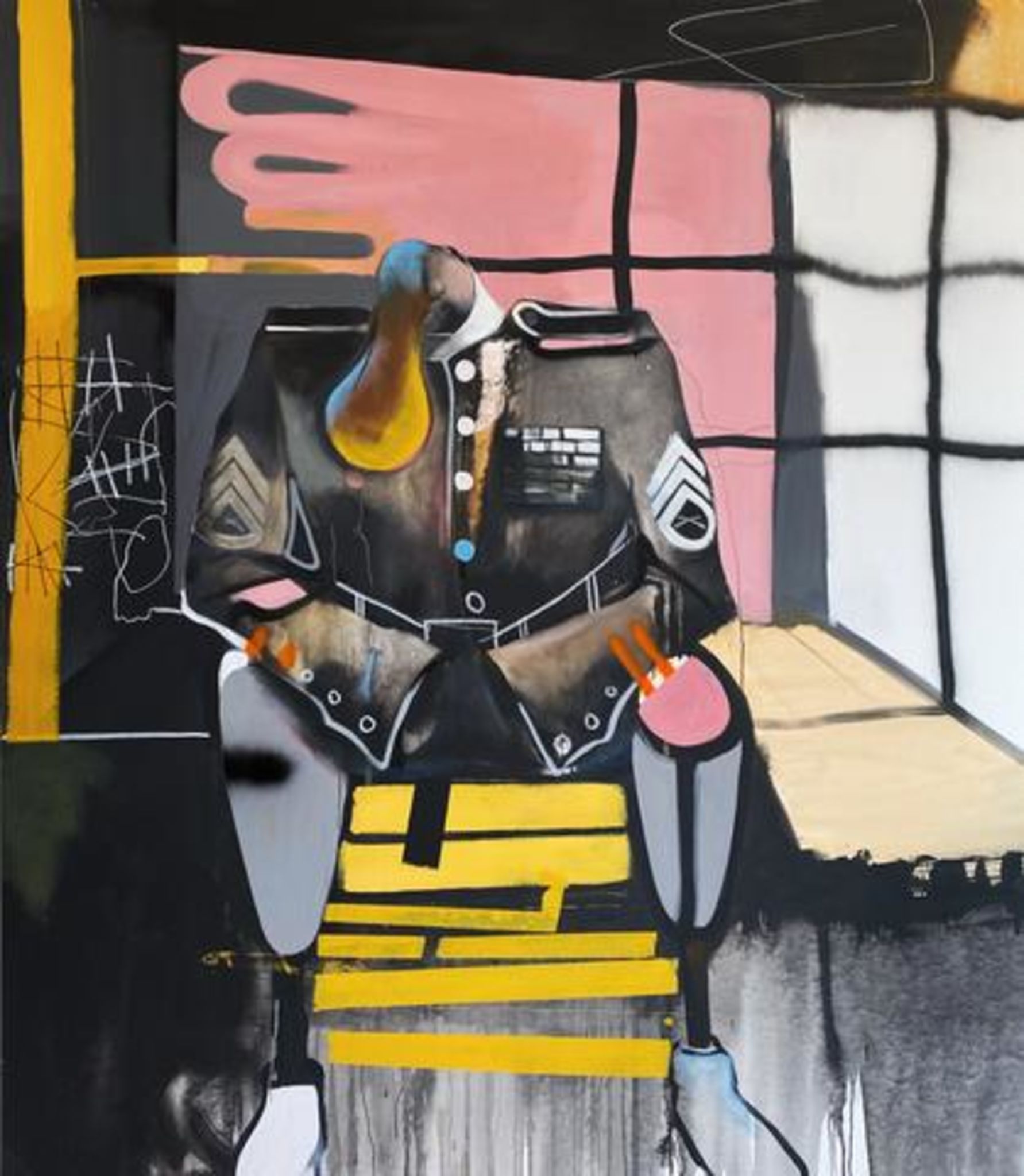 Marcus Jansen, Confined without a Soul, 2021
Marcus Jansen, Confined without a Soul, 2021
Victims and Victors, January 13 – February 19, 2022 at Almine Rech, London.
marcusjansen.com
alminerech.com
Featured Image: Marcus Jansen, War Against Propaganda, 2021
Words and interview by Jacopo Nuvolari

